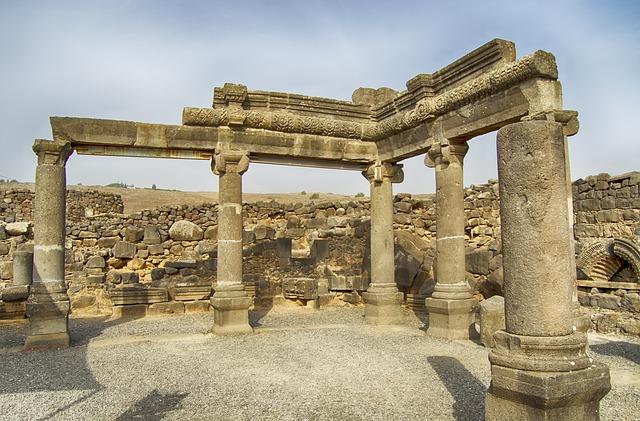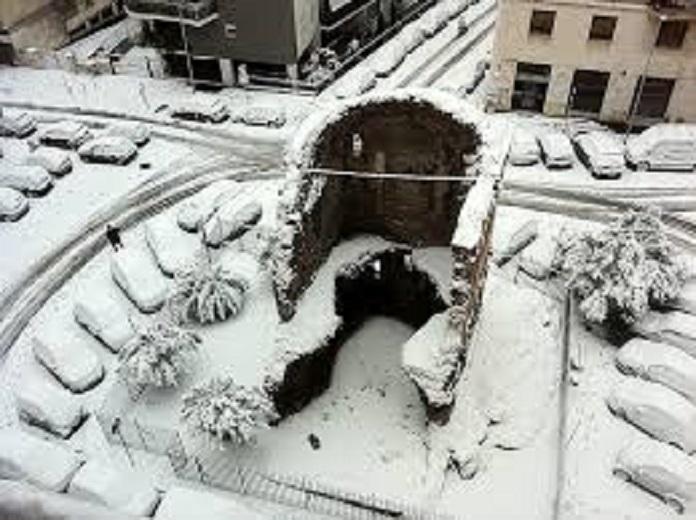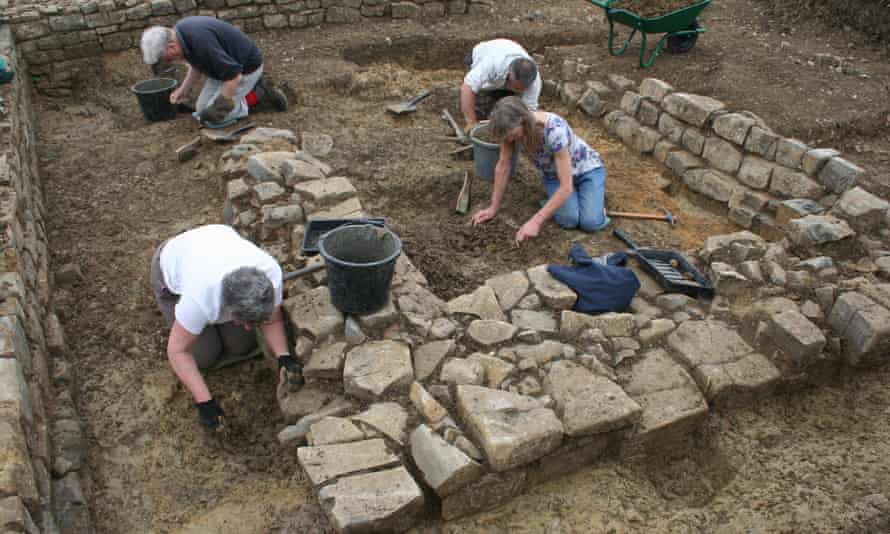Archaeological finds that debunk biblical myths

The spiritual history of humanity is replete with interesting facts. Recently, archaeologists have discovered some of the oldest places of worship that have not been seen for centuries.
That should be said that not always archaeological finds become a confirmation of what is written in the sacred books, but rather the opposite.
Double complex in the Atacama

One of the driest places in the world is Chile’s the Atacama Desert. Thousands of years ago, people survived in this area, living in so-called eco-shelters, where there were enough resources to support the population.
A few years ago, discovering new ruins led scientists to speculate that representatives of various eco-sanctuaries worked together to build two religious complexes 1 kilometer apart.
Although today it is no longer possible to say with certainty what exactly happened at these sites, this was at least partly due to the ceremonies. And one of these places, 3200 years old, proved that even in a desert as harsh as the Atacama, you could find real treasures.
During a 2015 survey, massive stone monuments, 28 children’s burials, golden offerings to the Gods, and artifacts brought from the Pacific and Amazon regions were discovered.
Tests carried out using special equipment showed that the complex prepared food, drinks, and even hallucinogens. The older complex, which is about 5,000 years old, was excavated in 1985 and was initially mistakenly identified as a settlement.
A 2018 follow-up study found it looked like another complex and contained no houses. Mortars with red pigment were also found in both sites, which were probably ground into a fine powder for ceremonial use.
Mysterious building in Rome

When electricians were recently laying cables in Rome, they found ruins. Since this city has long been known for ancient finds, the find did not surprise.
However, the old building was quite mysterious. At first glance, it looked like it was a Roman villa, but archaeologists were convinced that the building was more of a public one.
According to several clues, it was determined that this is a place of worship. There was a cemetery nearby, including mausoleums, and the building dates back to when the first churches were allowed in Rome.
In 312 A.D. Roman Emperor Constantine abolished the persecution of Christians, who were a religious minority. Given that the building dates back to the third or fourth century, the ruins may have belonged to one of the oldest freely practicing churches in the city. Built near the Tiber River, the building has a unique feature – it is inlaid with marble.
One room was particularly exquisitely decorated – the floor was covered with red, green, and honey marble patterns. Analysis showed that the marble was imported from Tunisia, Egypt, and Sparta.
Dunkeld carvings
In Scottish Perthshire, you can see Dunkeld Cathedral, which was built in the 1200s. But its history dates back to 849 AD, when the king of the Picts, Constantine, ordered the relics of St. Columba to be delivered to this place.
In 2018, scientists exploring the grave of Bishop Cardeny discovered an unexpected but delightful surprise. Appointed in 1399 by Pope Benedict XIII, Robert de Cardeny became the cathedral’s longest-serving minister – he held office for 39 years.
During the renovation, the team found about a dozen previously unknown carvings (mostly images of people) that were “hidden” near the back of the tomb, facing the wall.
There was not a single record of what it is. The stone carvings were especially unusual because their location suggested that the tomb had previously been in a different location. Why anyone felt the need to move the final resting place of the bishop remains a mystery.
Ella Valley Complex

During the fourth century, Christianity spread throughout Israel. Early churches were often built on biblical sites or the tombs of martyrs and saints.
In 2017, archaeologists discovered ruins in the city of Beit Shemesh, presumably associated with the biblical battle between David and Goliath (it is believed that the site of the famous duel is the Ella Valley).
The 1,500year-old church and monastery ruins have been excavated with impressive stonework, marble window frames, and column bases. It is believed that the marble was imported from Turkey.
The complex is considered the largest church in the region and is particularly notable for excellently preserved. One of the best finds was a mosaic floor depicting fruits, leaves, and birds.
The size of the building and the art suggest that the church was quite wealthy, but then, for unknown reasons, it was abandoned in the seventh century.
Oldest monks in Britain

In the 1880s, ruins of the medieval Becker Chapel were discovered in Somerset. During repeated excavations in the 1960s, about 60 bodies were found. Only one belonged to a woman, so scientists logically assumed that it was a monastic cemetery.
In 2016, the remains were checked again using radiocarbon analysis, and the results surprised everyone. The earliest bones were buried between 406 and 544 AD, meaning they were much older than anticipated (archaeologists expected the cemetery to be medieval as the chapel was said to be fairly new).
This also disproved another suggestion that the people belonged to a later group of monks. In any case, the skeletons represent the oldest monks in the United Kingdom.
The cemetery also revealed that the monastery had been in use for some time, and people were buried there from the seventh to the ninth centuries. Since the Viking hordes took over Somerset in the ninth century, it is possible that this is why the monks were no longer buried here.
“The Lost World” under the Cathedral
The Basilica of St. John Lateran was built in Rome in the 17th century. The cathedral was also the “youngest” of several structures built on top of each other, beneath the ruins of another basilica built by Emperor Constantine’s order in the fourth century AD.
The Chapel of Constantine stood in the military barracks, which housed the elite cavalry soldiers. In the last layer, under the barracks, they found a villa decorated with exquisite frescoes. Unsurprisingly, archaeologists wanted to dig even deeper. Recently, a team of specialists managed to get deep under the cathedral.
They walked down narrow tunnels and worked half an hour in shifts to avoid suffocation. Using laser equipment that the Diggers dragged along, they scanned all levels, finding war graffiti on the ruins of an old villa.
Finally, a three-dimensional reconstruction showed that the barracks and Constantine’s chapel were large complexes. The military structure also matched identical barracks found nearby; both, it turned out, belonged to the same cavalry unit. But the leadership of Rome kept them separate to prevent the conspiracy of the soldiers against the emperor.
Fake Dead Sea Scrolls
After a $500 million donation was made to the Museum of the Bible, it surprised many. But a year later, in 2018, management made an announcement that once again brought worldwide attention to the young but controversial museum in Washington.
It turned out that some of their most priceless artifacts were forgeries. More precisely, these were five fragments of the so-called “Dead Sea Scrolls” (Qumran Scrolls). The actual scrolls have about 900 rolls and 50,000 fragments. They contain the earliest texts from the Hebrew Bible.
Considering that they date from the third century BC, the scrolls are also older than the Old Testament. Collectors are willing to fork out huge sums, and it’s no surprise that this is just a gold mine for counterfeiters. In 2017, an expert expressed his doubts about the museum collection, after which high-tech tests were carried out on paper, ink, and sediment on the artifacts.
The results showed that the museum was deceived and suffered huge losses. The amount paid by the institution for the five fragments is unknown, but it is likely to be in the millions. To make matters worse, the remaining seven fragments in the museum may also not be genuine.
Ark replica
An ancient legend says that the Ark of the Covenant is located in Ethiopia. This chest supposedly contains ancient tablets with the texts of the Ten Commandments. For centuries, the Church of Our Lady of Zion in Axum has claimed to be home to a priceless artifact.
However, the priests refused to show it to anyone. In 2018, researchers learned about an interesting fact. The Italians invaded Ethiopia in the 1930s. When the Italians declared war on the United Kingdom, British troops arrived and the Englishman Edward Ullendorf burst into the church with a troop of soldiers.
Ullendorf later became a professor of oriental and African studies. Although he died in 2011, Ullendorf had been interviewed by the Los Angeles Times a few years earlier about what he had seen.
According to Ullendorf, the Aksum artifact was an old but not the biblical ark that once stood in King Solomon’s Temple. It was a medieval copy. Ullendorf decided to remain silent for such a long time because he was working in Ethiopia. If he insisted that the ark was fake, it would ruin his career in the country.
Sodom destroyed by a meteorite
Tall el-Hammam is located in Jordan. Some scholars believe that this was the biblical Sodom, which is believed to have been destroyed by God. Excavations have shown that a long time ago, a devastating cataclysm struck the city and its surroundings.
The high walls of El Hammam were 2.5 kilometers long, 15 meters high, and 30 meters thick. They were destroyed in an instant. Thousands of people probably died as the community was destroyed. No one has worked the land for 700 years. This was odd for a water-rich area (given the arid surroundings).
According to a 2018 study, this terrifying cataclysm was a meteorite. There is reason to believe that the celestial body exploded in the air about 3,700 years ago. The resulting shock wave destroyed and burned about 500 square kilometers. After that, the soil was saturated with sulfates and salts, which interfered with agriculture.
The damage to the wall corresponded to the direction of the explosion, and the heat was such that it even formed glass on it. Such an explosion corresponds to the description from the Bible: “Then the Lord rained down burning sulfur from heaven on Sodom and Gomorrah, and destroyed these cities and all the surrounding area, destroying all those living in the cities, as well as vegetation on earth.”
Fake Turin blood stains
Some belief the Shroud of Turin to be the burial cloth in which the body of Jesus was wrapped. Today, a piece of this linen is in the Cathedral of St. John the Baptist in Italy.
On the canvas measuring 4.4 x 1.1 meters, there is a unique imprint of a man with wounds from the crucifixion. In 1988, a study of the shroud was carried out using radiocarbon analysis, which showed that the canvas was created in the years 1260-1390 AD. Then many refused to admit that the relic was a hoax.
In 2018, bloodstains were checked using forensic methods. The blood from only one wound was clear enough to be “real” – a spear wound to his chest.
The rest showed clear inconsistencies. No other stain matched the expected patterns of the stains of someone who hung on the cross before being placed in the grave.
Bloody streams on the right hand could have formed only if the person’s hands were at an angle of 45 degrees. The spots on the forearms indicated that the arms were in an upright position. Keeping your hands in both positions at the same time is simply physically impossible. The blood on the Turin Shroud was “made” by an unknown medieval artist.




